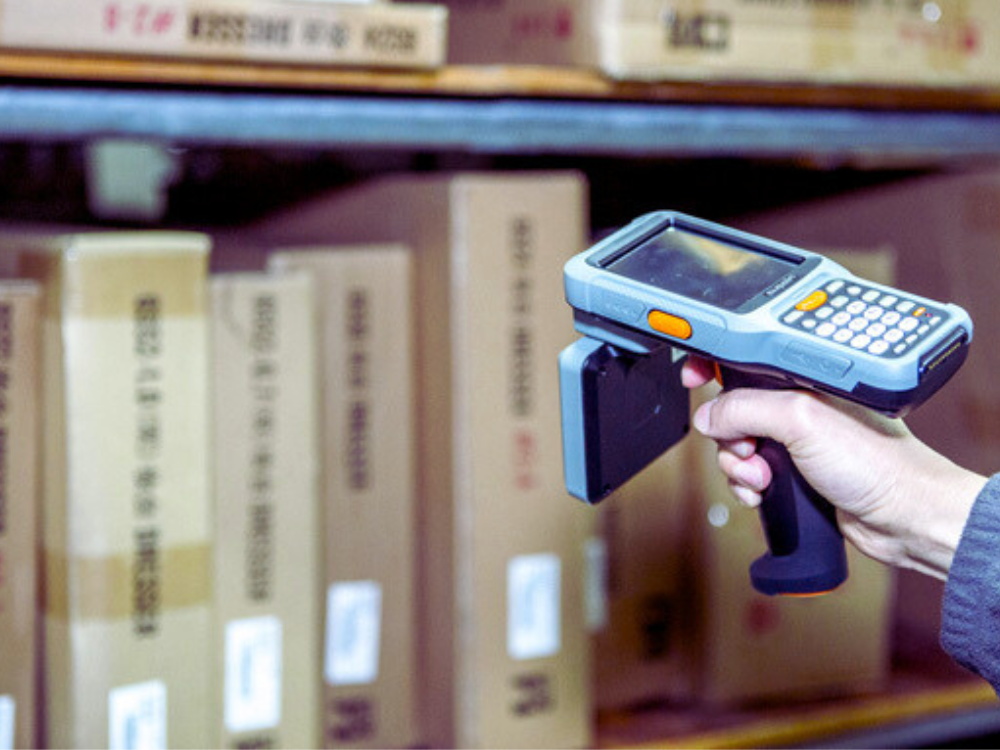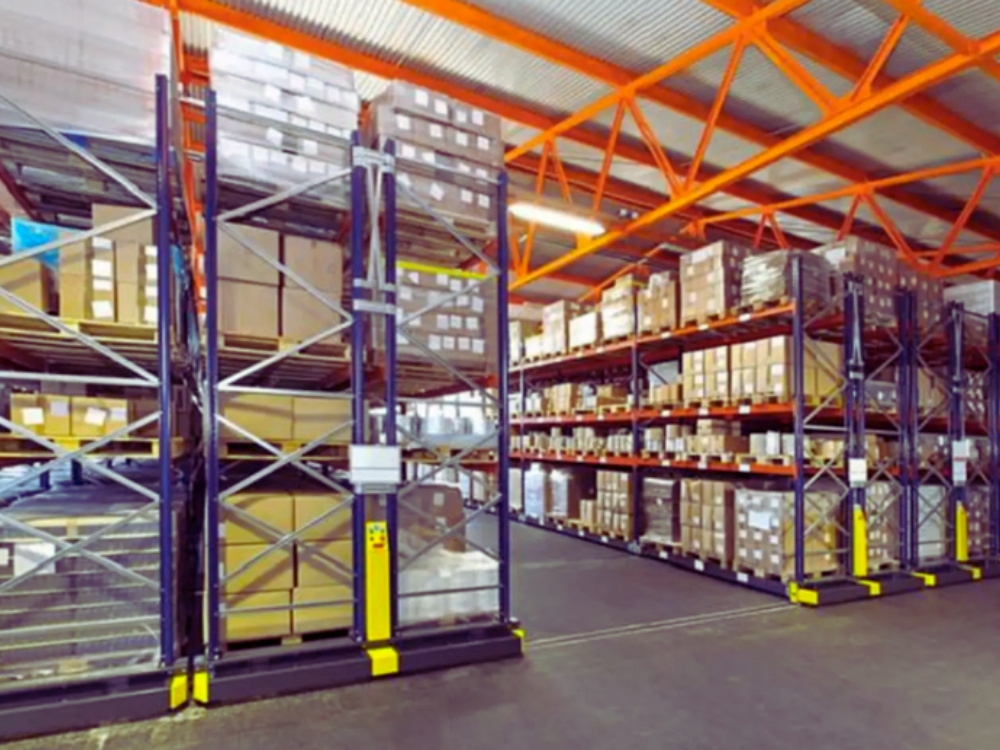
RFID Chip Stickers: Essential Components for Modern Identification and Tracking
Table of Contents
Summary
This article explores the fundamental aspects of RFID chip stickers, their operational principles, classifications, and various use cases, offering a comprehensive guide to their applications.

What Are RFID Chip Stickers?
Core Components and Functionality
RFID chip stickers are sophisticated tags that combine an RFID chip and antenna within a single adhesive unit. The key components include:
- RFID Chip: Stores and processes information.
- Antenna: Facilitates the transmission and reception of radio waves.
The RFID chip sticker operates by receiving radio waves from an RFID reader through the antenna. The chip processes the signal, retrieves the stored information, and sends it back to the reader, enabling contactless data exchange. This technology enhances the efficiency and accuracy of data collection compared to traditional methods like barcodes.
Working Principle
RFID chip stickers enable contactless communication by using radio waves, which allows them to transfer data without direct physical contact. This technology streamlines information acquisition and is less prone to errors compared to manual scanning systems.
- Access Control Systems: Secure entry points requiring immediate verification.
- Public Transportation: Contactless payment systems for swift boarding processes.
- Library Management: Efficient tracking and management of borrowed materials.
Classification of RFID Chip Stickers
Types Based on Power Supply
RFID chip stickers can be categorized based on their power supply and operational characteristics:
Active RFID Chip Stickers
Features:
- Built-in Battery: Provides active signal transmission.
- Reading Distance: Up to several kilometers.
- Data Storage: High capacity.
Applications: Suitable for long-distance tracking and real-time monitoring, such as in-vehicle management, personnel tracking, and high-value asset surveillance.
Semi-Active RFID Chip Stickers
Features:
- Battery-Assisted: Enhances signal strength when needed.
- Reading Distance: Medium range.
- Battery Life: Extended compared to active tags.
Applications: Ideal for scenarios requiring medium-distance readings with higher accuracy, such as tunnel traffic monitoring and warehouse management.
Classification Based on Operating Frequency
Passive RFID chip stickers are further classified into three categories based on their operating frequency:
Frequency Type | Frequency Range | Reading Distance | Common Applications |
Low Frequency (LF) | 125 kHz or 134 kHz | Few centimeters to 1 meter | Animal identification, industrial automation, access control |
High Frequency (HF) | 13.56 MHz | Few centimeters to 1 meter | Library management, electronic payments, smart cards |
Ultra-High Frequency (UHF) | 860 MHz to 960 MHz | Several meters to tens of meters | Asset tracking, inventory management, logistics |
Applications of RFID Chip Stickers
Inventory Management
UHF RFID chip stickers excel in warehousing and inventory management by enabling real-time monitoring of goods. Their long reading distances and rapid data processing capabilities facilitate:
- Automated Tracking: Real-time scanning of goods at entry and exit points.
- Error Reduction: Minimizes manual counting errors.
- Optimized Supply Chain: Enhances inventory accuracy and supply chain efficiency.
Example: The Flexible On-metal Impinj Monza® R6 TPU UHF RFID Tag is ideal for inventory management due to its flexible material that adheres to irregular surfaces.

Asset Tracking
Active RFID chip stickers are highly effective in tracking assets across large areas. Their long-range capability supports:
- Equipment Monitoring: Real-time location and status updates for construction equipment and medical devices.
- Asset Utilization: Ensures proper usage and security of high-value assets.
Access Control and Security Management
LF and HF RFID chip stickers are commonly used in access control systems. Their features include:
- LF Stickers: Suitable for environments requiring high security and strong penetration, such as access control for heavy doors.
- HF Stickers: Ideal for rapid identification in areas like office buildings and airports.
Library and Archives Management
HF RFID chip stickers simplify the management of books and documents in libraries and archives by:
- Efficient Borrowing: Streamlining the check-in and check-out process.
- Inventory Management: Facilitating quick location and tracking of materials.
Supply Chain and Logistics Management
UHF RFID chip stickers offer efficient tracking throughout the supply chain by:
- Real-Time Monitoring: Tracking goods across various stages of transportation.
- Improved Logistics: Enhancing transparency and efficiency in logistics operations.
Electronic Payment and Smart Cards
HF RFID chip stickers are integral to electronic payment systems, enabling:
- Fast Transactions: Secure and quick payment processing.
- Smart Cards: Widely used in transportation cards and employee ID cards for seamless access and transactions.
FAQs About RFID Chip Stickers
What is an RFID chip sticker?
An RFID chip sticker is a tag with an embedded RFID chip and antenna that communicates wirelessly with an RFID reader to facilitate data transmission and automated identification.
What are the types of RFID chip stickers?
RFID chip stickers are categorized into passive, active, and semi-active types. Passive tags are further divided into low-frequency (LF), high-frequency (HF), and ultra-high frequency (UHF) based on their operating frequencies.
What are the main applications of RFID chip stickers?
RFID chip stickers are used in various fields including inventory management, asset tracking, access control, library management, logistics, and electronic payment systems. The choice of tag type depends on specific application needs and operational requirements.
Comments
Hot Products

What Is RFID Waste Management
Imagine a city where every trash bin speaks — not literally — but through a tiny chip that tells the system when it’s full, when it’s emptied, and where it went. That’s what RFID waste management is doing today.

What are Bolt Seals and their Applications? | Complete Guide
In global trade and logistics, bolt seals play a crucial role in ensuring cargo security and compliance. These small but powerful devices are designed to lock shipping containers, trailers, and cargo doors with a tamper-evident mechanism.

What is an RFID Card Protector? Benefits, Use Cases, and Buying Guide
RFID technology (Radio Frequency Identification) is everywhere: in your credit cards, ID badges, transit passes, hotel room keys, and more. It offers speed and convenience, but it also opens the door to a new kind of digital theft called “skimming.” That’s where an RFID card protector comes in.

RFID Wristbands for Events: Bulk Buying Guide for Organizers
RFID wristbands for events are becoming the go-to solution for organizers who need faster entry, fraud prevention, and cashless payments at concerts, festivals, and sports venues. Unlike paper tickets or QR codes, these smart wristbands use embedded chips to streamline access, secure transactions, and improve the guest experience.

How RFID Tag on Windscreen Improves Vehicle Access Control and Toll Systems
In today’s fast-paced world, vehicle identification needs to be quick, secure, and contactless. An RFID Tag on the Windscreen provides exactly that — a reliable way to manage toll collection, parking, and gated access without stopping vehicles.

The Benefits of RFID Linen Tags in Commercial Laundry
Managing laundry in hospitals, hotels, or large laundry services is a big job. Each day, thousands of sheets, towels, and uniforms are washed, sorted, and sent back out. But problems like lost linens, sorting mistakes, and manual counting can cost companies a lot of money. For example, mid-sized hotels can lose over $200,000 each year from missing linens.
That’s where RFID Linen Tags come in.
Tags
RELATED BLOGS

What Is RFID Waste Management
Imagine a city where every trash bin speaks — not literally — but through a tiny chip that tells the system when it’s full, when it’s emptied, and where it went. That’s what RFID waste management is doing today.

What are Bolt Seals and their Applications? | Complete Guide
In global trade and logistics, bolt seals play a crucial role in ensuring cargo security and compliance. These small but powerful devices are designed to lock shipping containers, trailers, and cargo doors with a tamper-evident mechanism.

What is an RFID Card Protector? Benefits, Use Cases, and Buying Guide
RFID technology (Radio Frequency Identification) is everywhere: in your credit cards, ID badges, transit passes, hotel room keys, and more. It offers speed and convenience, but it also opens the door to a new kind of digital theft called “skimming.” That’s where an RFID card protector comes in.




